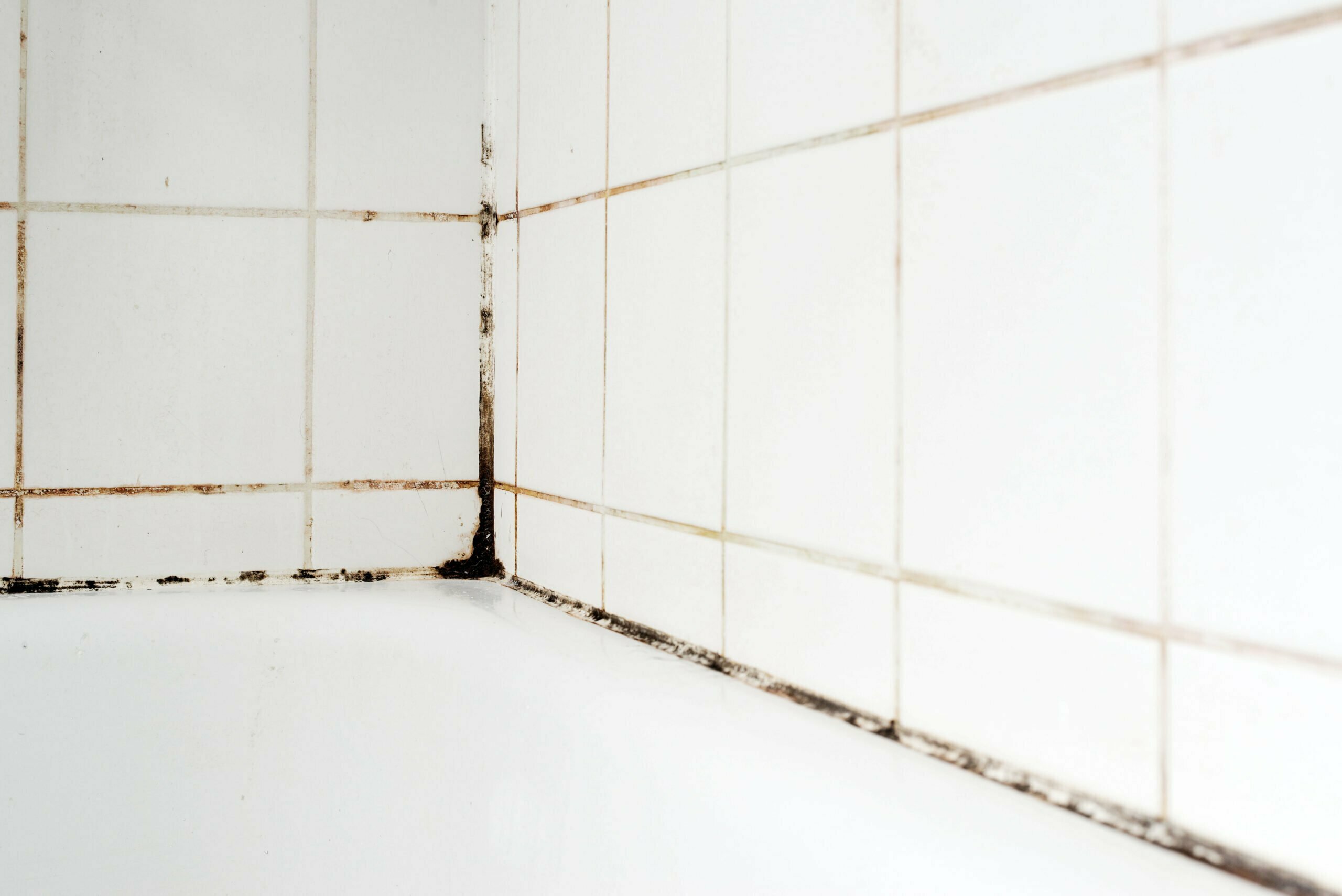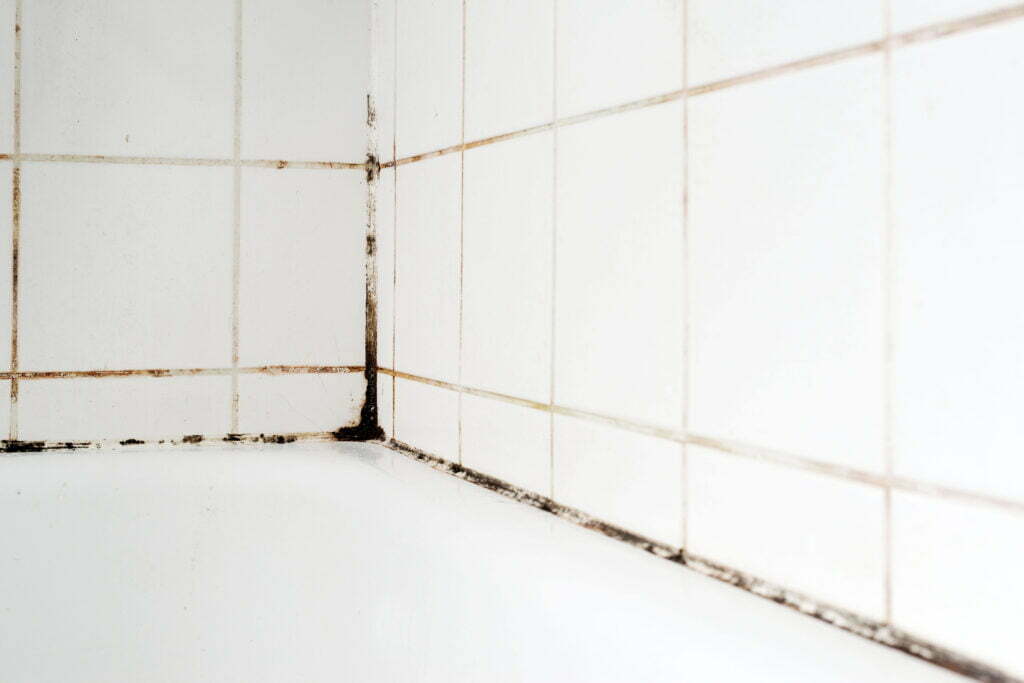
Mold in bathroom infestations are a common occurrence in most households. In fact, some reports estimate that around 70% of the houses have mold problems [1].
What is mold?
First, let’s get to know what mold is briefly.
Mold, sometimes called fungi or mildew, is a group of microorganisms that has various forms, shapes, and colors. Their characteristics differ depending on their species and while some of the molds can be quite harmless, some can cause serious health threats.
Molds usually grow on organic matter and they need a moisture-rich environment to thrive. They produce tiny particles—known as spores—which when fallen on a surface, can sprout a new fungal colony. These spores are quite hardy and they can survive many harsh conditions. This makes it exceptionally hard to completely get rid of molds.
You can find molds or their spores everywhere and no space can be 100% free of them [2].
How many types of molds are there? Should we worry about all of them?
There are more than 100,000 species and types of molds but only a few can be found in household environments. The most common types of mold you will find in indoor settings are Cladosporium, Penicillium, and Aspergillus [3]. Some other fungal species like Alternaria, basidiospores, Chaetomium, Periconia, and Stachybotrys chartarum have also been reported in certain buildings [4] [5].
Most of these fungi do not cause diseases. However, species like Stachybotrys chartarum can cause serious respiratory tract symptoms as well as conditions associated with the central nervous system [4].
We will discuss the health consequences of mold contamination later in this article.
How do I know if there’s mold in my bathroom?

There are several signs of fungal growth in a bathroom. Some indications can be quite obvious while others can be easy to miss until they spread out of hand—which mold does surprisingly quickly.
The first thing you sense if there’s mold in your bathroom is most likely a moldy smell. This is the odor of the mold decomposing its surfaces and it can smell earthy or musty.
If you notice your bathroom has this smell, but can’t see mold in visible places, it probably means there’s some hidden growth of fungi in there.
The more noticeable signs of mold growth are dark spots. These spots may appear on the tiles, tile grout, waterproof sealant around your bathtub or sink, or even on the bathroom ceiling. You will see tiny blackish-grey or brownish dots at first and they can increase in size if left uncleaned. They can look fuzzy or slimy depending on the fungal species.
More serious mold problems can cause the bathroom tiles to come loose or the wall plaster to disintegrate. You may even notice swellings in the paint. These signs can indicate mold growth underneath the tiles or inside the drywall.
Why does mold grow in the bathroom?
Moisture damage is the main culprit of mold attacks. Bathrooms are especially prone to mold growth as they are constantly exposed to water. If you detect fungal infestations in your bathroom, most likely you have water spills, leaks, or other structural issues that lead to water overflow [6].
Molds love dark, damp environments with poor air circulation. Even the cleanest and driest bathrooms can have a few spots that fit this description. Under the sink, behind the water closet, and around the shower area are the most common places that are ideal for fungal growth.
Cellulose products such as paper, cardboard, and wood provide perfect nutrition sources for mold when they get wet [3]. However, molds can also grow in particularly nutrient-poor substrates such as dry wall plaster, paint, and insulation materials.
Wet towels, damp toilet paper, and uncleaned bath toys can also be the best breeding grounds for fungi.
Poor ventilation is another reason that causes a high moisture content in the air which leads to a humid environment in your bathroom. This can also act as a contributing factor for mold growth on walls, flooring, and roofs.
Can mold be a health concern?
Molds—especially their spores and metabolites—can lead to various health-related issues in some people while some may not be affected [3]. Molds produce allergenic substances, irritants, and sometimes, toxins [7]. If you’re allergic or sensitive to these stuff, you can get sick if you touch or inhale them.
Most of the symptoms are related to the upper respiratory tract such as coughing, sneezing, wheezing, or a stuffed nose. They can produce long-lasting flu and cold-like symptoms that don’t go away.
In people with allergies, fungi or fungal spores may trigger more serious conditions such as asthma or hypersensitivity pneumonitis [8]. They can also cause respiratory infections such as bronchitis [8].
Other symptoms that arise due to molds include headache, eye irritation, nosebleeds, and even gastrointestinal problems [9].
Apart from respiratory tract irritations, toxin-producing molds like Stachybotrys chartarum can cause symptoms related to the central nervous system. These symptoms can include headache, lightheadedness, sleep problems, and difficulty concentrating [4]. Although seemingly unrelated, they can also make you easily irritated and make you mentally fatigued [4].
Most of these indoor fungi don’t cause infections in humans as they prefer cooler temperatures than the body temperature. However, some species can result in infections in the skin, nails, and toes [5].
What other problems can these molds cause?
In addition to these health problems, fungi contamination can bring about various other complications. The dark spots and musty odor can noticeably lower the aesthetics of your bathroom, making the environment unpleasant.
But that’s the least of your problems if you consider more critical structural issues mold can cause if uncontrolled. Molds get inside and literally eat up organic materials in order to absorb nutrients from them. This means any surface they grow on will disintegrate and fall apart.
It can happen to your walls, roofing, flooring, and insulations. In extreme situations, this can even result in walls falling down, ceilings collapsing, and floorboards crumbling. Even floor tiles can crack and come loose if the floorboards underneath are decaying. Grout and sealing may fracture, leaking water inside and making the situation worse.
Is there a way I can prevent mold growth?
First and foremost, you should avoid moisture build-up in your bathroom. As molds thrive in highly humid conditions, keeping your bathroom dry is the first step to preventing mold growth.
Check regularly for leaks under the sink as they are easy to miss and they provide ideal spots for fungal infestations. Leaks can also happen in your shower, around the toilet, and inside your walls. Make note of any dampness in your walls or on your floor as they can be a sign of leaking pipes. If you’re living in a multiple-story building, you can even have leaks on your ceiling.
Make sure there’s enough ventilation in your bathroom. Open windows to let air move around. If there aren’t any windows, be sure to turn on your exhaust fan regularly—especially after a shower. Non-moving, damp air can settle on surfaces and make the environment favorable for mold growth.
The best is to let your bathroom get a lot of sunlight but it can be a difficult (or even an impossible) task if you’re living in an apartment building. In such a situation, know that there’s a potential risk of mold infestation and take extra precautions to keep your bathroom moisture-free.
You can place a dehumidifier or an air conditioner to draw water vapor away from your bathroom. The guidelines state that you should keep the relative humidity levels between 30% and 50% throughout the day [3]. Make sure you check the moisture levels several times during the day to do needed adjustments.
It’s best not to have carpets in your bathroom as they can easily get wet and retain wetness. Remove wet towels, wash clothes, rugs, or toilet tissues immediately from the bathroom as they can increase the dampness and lead to mold growth. Refrain from placing wet towels on the floor. Hanging them on a hook will dry them quickly, reducing the risk of moisture accumulation.
Wipe off the shower area and shower curtains on a regular basis. Wet shower curtains as well as wet tiles and bathtubs are especially prone to harbor molds.
Make sure water gets drained from your floor and bathtub completely. Sometimes, water doesn’t drain well from these areas and it can then get inside the grout and sealing around the floor tiles, bathtub, and even the walls. This can cause mold to grow and spread inside without getting noticed and cause serious damage.
Declutter your shower area and keep only the essential items. Water can collect around these items and raise moisture levels, thus increasing the chance of fungal growth.
Clean your bathroom regularly and give special attention to problem areas, namely under the sink, around the toilet, and in the shower area. Check for any problem spots or foul smells. Mold can be easy to control if detected at the initial stages.
You can use a bleaching agent or vinegar to clean the surfaces to prevent mold growth from happening.
If you’re building a new bathroom or remodeling your existing bathroom, you can check out building material options such as mold-resistant drywall or mold-resistant paint. While there’s no guarantee that they will 100% keep mold out of your bathroom, they seem to significantly reduce the fungal growth [10].
I already have mold in my bathroom! Can I get rid of it?
Firstly, you need to know that it’s not possible to completely remove molds and their spores from your bathroom [7]. As mold spores are tiny, and highly dispersible in the air, they will somehow get away and fall on other surfaces. Your best bet is to remove what is there and take measures to keep them away in the future.
Secondly, you need to act fast. Mold grows quite fast and if you leave them untreated, it will spread and damage the surfaces it grows on. It means on top of removing mold, you will also have to remedy the structural damage it had caused.
If the mold is just starting to grow—meaning it’s only on the surfaces and is not spread to structures underneath—you can scrub it away with household cleaning products [11]. You can use soap, general bathroom cleaners, or bleach mixed with water to clean fungal-infested areas.
One thing to take caution is to never mix two cleaning products (especially bleach and ammonia-containing products) as they can react with each other and produce poisonous fumes.
Make sure to wear appropriate protective gear such as gloves, masks, and boots to avoid getting cleaning products and fungal particles on your skin, eyes, and nose.
U.S. Environmental Protection Agency (EPA) recommends asking for professional help if you have mold spread in an area of more than 10 square feet [7].
As mold can cause irritations in certain people even if it’s dead, you need to make sure you remove them after killing it with chemicals [7].
Key takeaways
In conclusion, molds can grow anywhere and everywhere—especially where there’s damp, dark, and cold. They can cause various health hazards, as well as structural damage. The first step to keeping mold off your bathroom is to keep it dry and well-lit. The first sign of fungal contamination is usually a stale odor followed by dark spots. If there’s mold, the quicker you clean and remove it, the better. You can use regular cleaning or bleaching products to remove mold in the early stages but if the situation has gotten out of hand, immediately call a professional mold removal service.

1 Comment
Nov th, 2022 2:55 AM Reply
[…] Mold can eventually appear in your bathroom due to numerous reasons. Trying to eliminate mold in your home requires a lot of hard work and patience. Staying proactive by taking a few steps to limit the […]